Covered trenches
Almost 80% of all Roman aqueducts were laid subterranean by 'cut and cover' technique. The easiest way was 1) to dig or hew a trench, 2)to build a channel or lay down pipe, and 3) to cover it up.
Many aqueducts were equipped with manholes (vertical inspection shafts) Extra: examples of roofs in different languages.
|
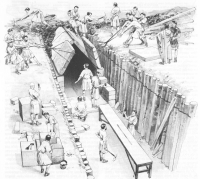 |
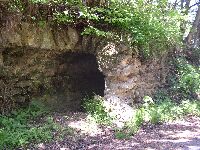 |
Surface channels: kwetsbaar. Including cross-section |
| Substruction: Sometimes extra walls were built to get the right level for the conduit. This was only done for a height less that 2 meter. |
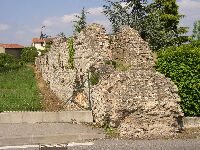 |
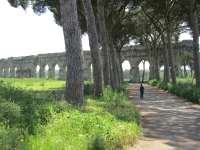 |
Arcade: To get the aqueduct on a higher position than 2 meters, a series of arches was built. The best know examples are found in the area of Rome |
| Tunnel: To prevent detours a tunnel could be necessary. For a number of reasons (to prevent lining problems - there are odd examples of miscalculations in aqueduct tunnels - to save time and to make more economic use of the labour force etc) the Romans often used the qanat way of tunnel construction inwhich multiple vertical shafts were dug over a hill top after which the bottom of the shafts were connected with eachother. The longest Roman tunnel, as far as we know, is the Mornant tunnel in the Gier aqueduct of Lyon (France): 825 meter long. There may have been a 2250 meter long aqueduct tunnel in the Anio Novus aqueduct of Rome. Using Qanat techniques. Nonius Datus |
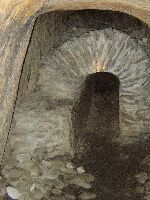 |
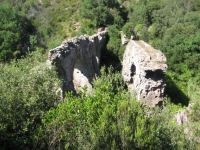 |
Bridge; double bridge; bridgelements + other langages; To 'bridge' a gap in the terrain and to prevent a long detour, especially to cross a valley or a river, a bridge for the aqueduct conduit was built. The highest bridge almost 50 meters above the river Gardon is the famous Pont du Gard, part of the aqueduct op Nīmes (France), but there are many more examples. In the case of the Metz aqueduct (France) a double channel crossed the Mosel river on one bridge, to facilitate maintenance (??) |
| Siphons: Where a valley to be crossed was too deep or too big for a bridge, a siphon was built. The aqueduct water ran into a distribution tank, often called header basin. A row of parallel (lead) pipes (e.g. 9) left the other side of the tank and descended into the valley, crossed the bottom on a so called 'venter' bridge and climbed up to the other side to the 'receiving' basin from which the water continued in a masonry channel to its destination. |
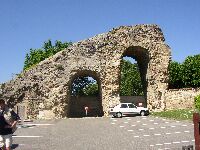 |
 |
Sources a.o. dams verwijzend naar typologie |
| Basins verwijzend naar typologie |







